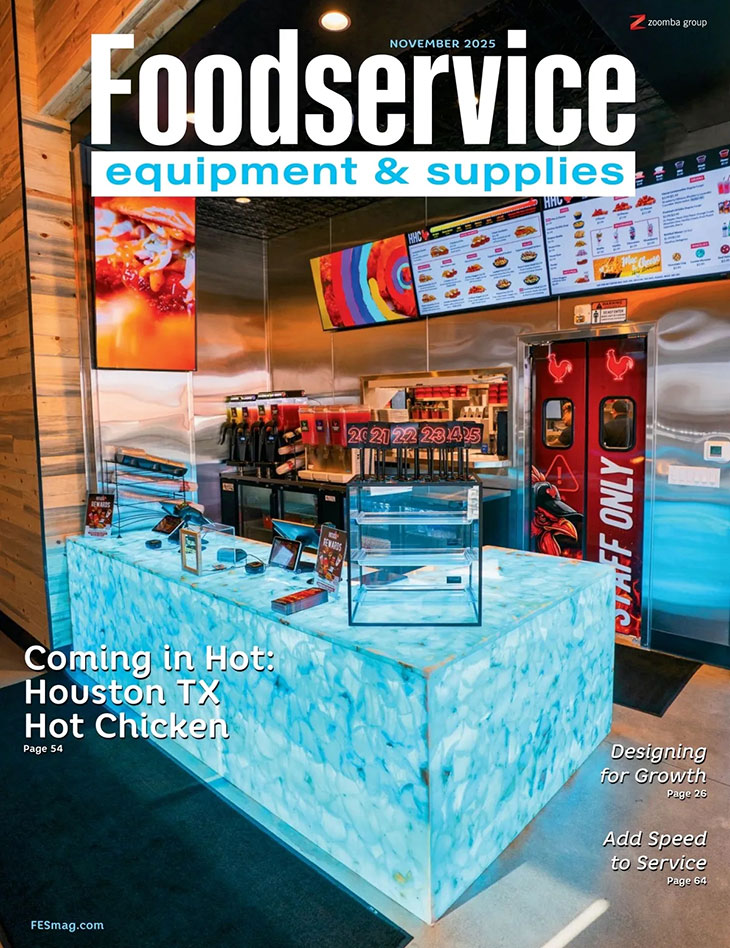One of the biggest challenges corporate dining, also known as business and industry (B&I) foodservice, continues to face is remaining relevant in the eyes of the customer. These operations strive to keep a consistent customer engaged and productive, which is no easy task.
 Khaled Halabi, Senior Associate — Project Manager, Cini•Little International Inc.,New YorkAs a result, the main trends affecting B&I foodservice mirror those you see in the market and on the streets today. The main thrust of B&I operators is to bring those trends into the corporate dining space. That way, it no longer feels like a traditional dining space. Rather, the space becomes fresh and engaging, inviting employees to eat within their place of employment rather than step outside and into surrounding eating establishments.
Khaled Halabi, Senior Associate — Project Manager, Cini•Little International Inc.,New YorkAs a result, the main trends affecting B&I foodservice mirror those you see in the market and on the streets today. The main thrust of B&I operators is to bring those trends into the corporate dining space. That way, it no longer feels like a traditional dining space. Rather, the space becomes fresh and engaging, inviting employees to eat within their place of employment rather than step outside and into surrounding eating establishments.
Let’s start by exploring how key menu trends affect the layout. Like other segments, healthier dining options remain front and center for B&I operators. This impacts design in two specific ways. First, the salad station now takes a more prominent role than ever before, becoming the first station customers see upon entering the space. The grill, which used to be front and center, now sits toward the back of the space.
The self-serve salad bar with countless options gets left behind. The salad bar of today becomes an action station, where customers journey through the preparation of their chopped salad, “shopping” for their preferred selection of greens, veggies, proteins and other ingredients, and partnering with a staff member to then create the finished salad. Culinary staff use small griddles to grill proteins like chicken or fish at the station to entice customers while promoting healthy choices.
The second development to promote health centers are beverages. A growing number of B&I operators continue to remove their soda dispensers, opting instead for flavored waters and juices. In fact, when space permits, many B&I operators look to include juice and smoothie bars to help customers select healthier beverages.
It’s one thing to update the menu to remain relevant, but the front of the house must look the part too. A major trend in corporate dining today is to look to the food market concept for inspiration. The longer, more monotonous food line that once was the hallmark of this segment is gone. Instead, the design incorporates elements from the food hall experience so the servery becomes a unique journey each time the customer sets foot in the space.
In the past, the customer’s only cue to what the station offered was the name on the top — deli, grill, pizza. Today, we strive to architecturally break up the space so people can go on a culinary exploration of sorts. Doing so also helps keep customer flow more manageable.
Each section now has its own design mood and brand identity, often created by using different tiling and millwork finishes. Doing so helps visually communicate what a station offers and differentiate it from other areas while providing the more customized and distinct appearance of a craft food hall. In other words, when you look at it, you know what it is. It’s a pizza station. Or a grilling station. They both have very distinct appearances.
Let’s Talk Tech
Technology continues to impact the way commercial operators go to market. But trends like self-ordering kiosks and mobile apps in cashless operations often take longer to manifest in the B&I segment, where operators often monitor these trends and developments before implementing them to their own unique environments. But make no mistake: Technology has made its presence known in the B&I segment.
A good starting point is understanding the different and new features that these systems offer. For example, once you have the data lines in place to handle payment and point of sale, it’s easier to introduce different features like kiosk and app ordering because much of the technological infrastructure is already in place.
In fact, many of our B&I accounts now use self-ordering kiosks. Additionally, touch screens can be introduced at each station where it’s beneficial. All of this is tied into the app ordering system so customers can choose meals ahead of time from their desks before collecting their orders from the pickup counter.
Some apps offer preordering features, which can also help operators manage crowds. The operator knows in advance what to expect and can guide customers to a specific space to pick up their orders. This not only makes the customers more productive, but it also allows for some time to walk the foodservice space, which can lead to impulse purchases.
Historical sales-related data helps operators prepare and plan better for peak periods. With this information, operators can precook specific items to alleviate some of the pressure that builds during these times. Take a grill station, for example — if the data shows customers will order a lot of a certain item, staff can cook it ahead and store it using hot-food holding equipment. When the rush hits, staff can finish and assemble the meal in a much shorter duration while still giving the appeal of made-to-order live cooking.
Given that app ordering is in its early stages in the B&I world, designing these pickup stations remains a work in progress and we’ve applied a variety of options to our designs. For example, some fast-casual chains have had success with placing orders in unheated cubby holes, which is an approach we’ve used in specific instances. We also have implemented more of a receptionist approach where the customer comes to a desk and someone hands over their food.
We’re also exploring the use of hot-food holding cubbies that get fed from the back of the house. The user gets directions and a code to help them access their meals. Which approach works best really varies by operator. But we need to know more. There is a lot of potential for the hot box applications, but we need to see these working in the field more to decide what’s best for the unique world of corporate dining.



